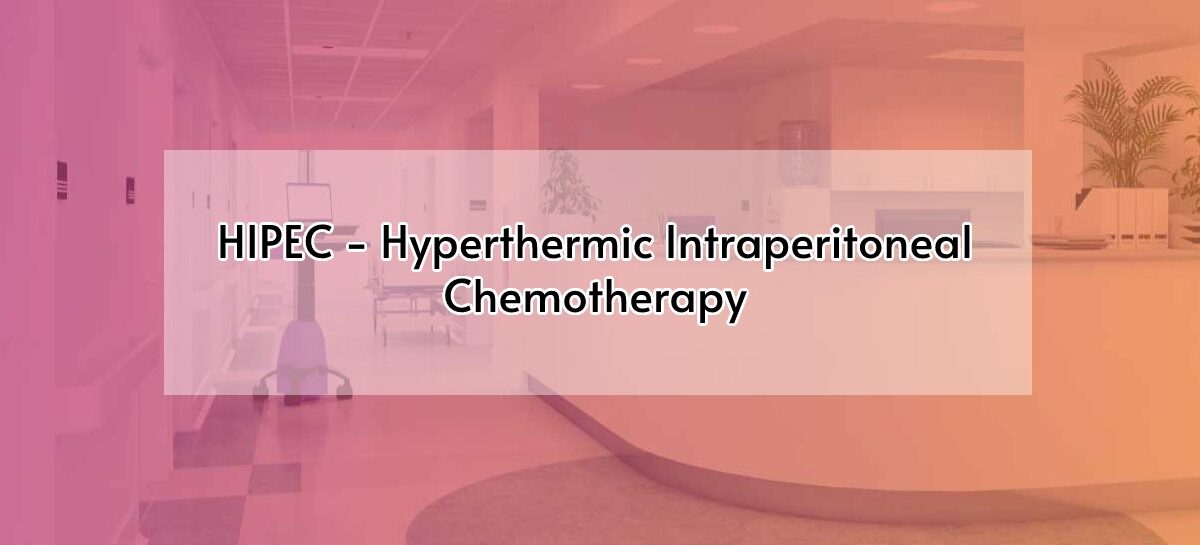INTRODUCTION
HIPEC is a well established treatment modality for abdominal malignancy with advanced peritoneal spreads. In HIPEC highly concentrated, heated chemotherapy treatment is delivered directly to the abdomen during surgery. HIPEC combined with cytoreductive surgery is an effective multimodal treatment option for selected patients.
CASE REPORT
A 33 year old male with a history of diabetic mellitus for 3 years on medical management presented with a history of vague abdominal pain and weight loss . On further work up and imaging which revealed the diagnosis of disseminated carcinoma sigmoid colon.
Preoperative anaesthetic evaluation done, good effort tolerance, controlled glycemic status, normal LV function. Patient is allergic to levofloxacin. Haemoglobin 11.4 , renal and liver parameters were within normal limits. Adequate blood products were reserved before surgery.
Pre-medicated with injection pantoprazole 40 mg and palonosetron 75 mg. Epidural placed at T11-T12 space and activated after 20 minutes with 4 mg morphine and 6 ml of 0.5 ropivacaine. Preoxygenated the patient for 3 minutes with 100% oxygen and induced with injection fentanyl 100 mcgs, propofol 130 milligrams and cisatracurium 10 mg. Intubated with an 8 size tracheal tube and anaesthesia maintained with oxygen, nitrous oxide and desflurane. After induction left radial artery cannulated, right internal jugular vein cannulation done with triple lumen central venous catheter under USG guidance, nasopharyngeal temperature monitoring probe placed, ryles tube inserted and bladder catheterised. Cisatracurium infusion 1mg per hour on flow. Antibiotic prophylaxis given.
After proper positioning, cytoreductive surgery performed for 8 hours. Patient required nor adrenaline support and titrated according to BP and MAP was maintained above 75 mmHg. Following cytoreductive surgery, intraperitoneal hyperthermic chemotherapeutic instillation with cisplatin 100mg/m2 at 42 degrees was done for 120 minutes. Before HIPEC measures were taken to maintain body temperature less than 37 degree by using hemotherm. Glycemic correction done with intravenous insulin (257-141mg/dl). Hemodynamic was stable and noradrenaline increased to 12 ml/hr. Max temperature recorded was 37.5. Serial arterial blood gas monitoring were done. Patient had metabolic acidosis during intra operative period (pH 7.44- 7.23) and was managed with sodium bicarbonate and electrolytes correction done according to ABG. Due to major fluid shift expected during HIPEC, according to BP, CVP and urine output fluids, blood and blood related products are administered and fluid boluses were given. After surgery, patient shifted to ICU and electively ventillated, once the hemodynamics stable, adequate urine output achieved, patient is pain free patient is weaned and extubated in intensive care unit.
Total anesthesia time 12 hours.
Surgical time is 8 hours.
HIPEC time is 2 hours.
DISCUSSION:
ANAESTHESIA GOALS
To maintain normothermia, normocarbia, normotension, adequate urine output and tissue oxygenation.
CONCERNS:
Blood loss, significant fluid shifts, glycemic abnormality, deterioration of gaseous exchange, end organ perfusion, Hemodynamic stability, coagulation abnormality, increased metabolic activity, electrolyte imbalance.
CONCLUSION:
The advent of CRS/HIPEC represents an alternative promising with numerous challenges regarding the metabolic and hemodynamic adjustment. The aim is to maintain and restore the integrity of the milieu interior. With a better understanding of the respiratory and hemodynamic derangements and their control with thermal regulation helps in improving the patient outcome.
REFRENCES
1.Miao N., Pingpank J.F., Alexander H.R. Cytoreductive surgery and continuous hyperthermic peritoneal perfusion in patients with mesothelioma and peritoneal carcinomatosis: hemodynamic, metabolic, and anesthetic considerations. Ann. Surg. Oncol. 2009;16(2):334–344.
2.Díaz F., Erranz B., Donoso A., Salomon T., Cruces P. Inuence of tidal volume on pulse pressure variation and stroke volume variation during experimental intra-abdominal hypertension. BMC Anesthesiol. 2015;15:127.
3.Schmidt C, Creutzenberg M, Piso P, Hobbhahn J, Bucher M. Peri-operative anaesthetic management of cytoreductive surgery with hyperthermic intraperitoneal chemotherapy. Anaesthesia. 2008;63:389–390doi:10.1111/j.1365-2044.2007.05380.
4.Esquivel J, Angulo F, Bland RK, Stephens AD, Sugarbaker PH. Hemodynamic and cardiac function parameters during heated intraoperative intraperitoneal chemotherapy using the open “coliseum technique” Ann Surg Oncol. 2000;7:296–300. doi: 10.1007/s10434-000-0296-2.



 Dr. Murali Magesh Venugopal
Dr. Murali Magesh Venugopal Dr. Nivetha Ganasundara Sureshkumar
Dr. Nivetha Ganasundara Sureshkumar